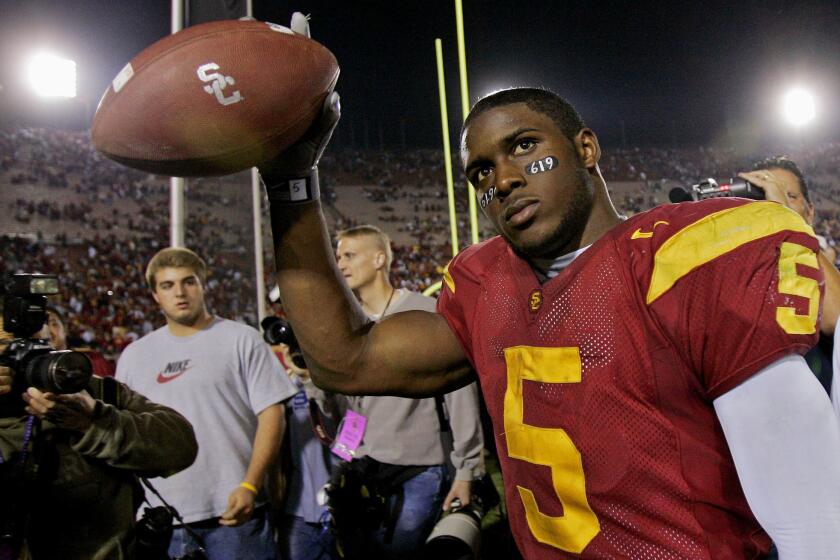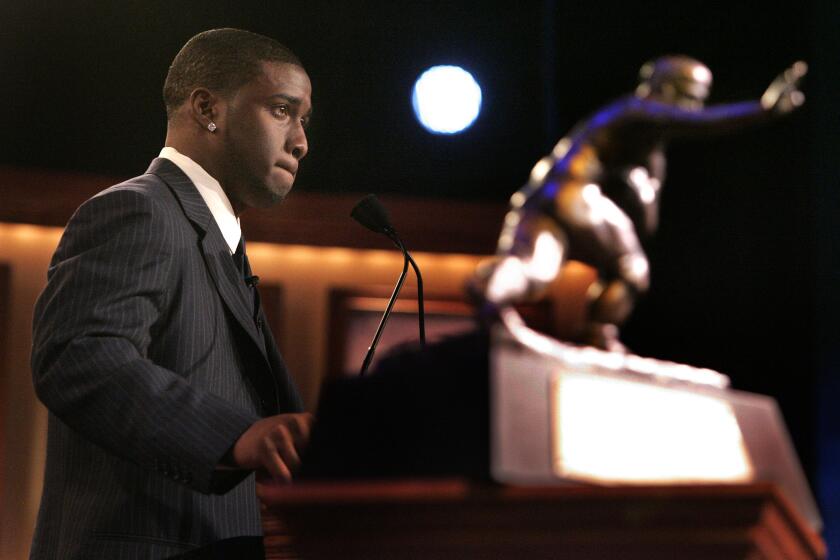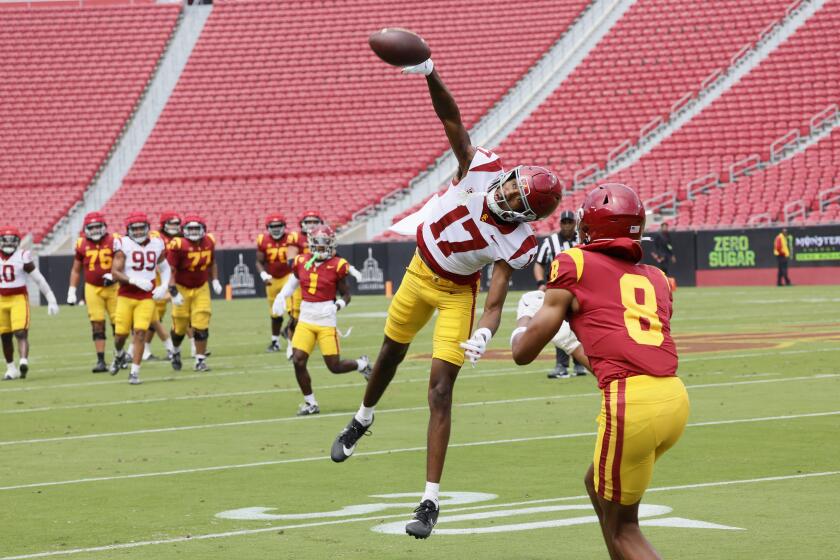Plenty of Second-Guessing at Finish
Two seconds left and USC clung to a six-point lead.
Two seconds left and Washington had the ball inside the 20-yard line, poised for one more shot at the end zone.
And then ... nothing.
Time ran out before Washington snapped the ball, leaving one team relieved, the other enraged, and coaches on both sides wondering what happened.
“From up in the box, it looked like total, mass chaos,” Washington offensive coordinator Tim Lappano said.
Even USC Coach Pete Carroll, on the winning sideline, said: “The last play was a mess.”
It was, at the very least, a confounding anticlimax to the Trojans’ 26-20 victory over Washington at the Coliseum on Saturday, two seconds that sparked protracted debate.
The confusion began when the Huskies passed for a first down to the USC 15, momentarily stopping the clock. Theoretically, they should have had time for another play.
“The general rule of thumb is that if there is one second when I wind the clock and they snap immediately, the play can go,” referee Brian O’Cain said.
This had nothing to do with new timing rules this season. The protocol is long-standing: The referee waits for the chains to set and his crew to take position. When all is ready, he points to the umpire, standing over the ball, to move a few yards off. Then, he starts the clock.
But rigid procedure can waver in real time.
On Saturday, officials first gathered to discuss the clock. Several Washington players said they overheard the crew talk about adding seconds or even calling the game over.
“I thought they were going to go back to five seconds because that’s what they were talking about,” Huskies receiver Sonny Shackelford said. “I was standing right beside them.”
O’Cain ultimately ruled that two seconds was correct. Meanwhile, Washington coaches barked instructions at quarterback Isaiah Stanback and Carroll paced the sideline, imploring the clock to start.
“It was almost like a timeout for them,” the USC coach said.
Still, the pause might have hurt Washington. Players stood around and could be seen talking. For center Juan Garcia, the action quickly shifted from slow motion to hyper-speed.
All afternoon, Garcia said, the umpire had warned him before stepping off the ball. This time, Garcia said, “He just took off running and I heard the whistle.”
Washington Coach Tyrone Willingham refused to be critical.
“It’s a difficult situation to officiate,” he said. “If the officials move too fast, are they favoring the University of Washington? If they move slower, is it for USC?”
Offensive coordinator Lappano blamed his quarterback, saying Stanback failed to recognize the circumstances and step under center quickly enough.
A similar verdict came from the Pacific 10’s coordinator for officials, Verle Sorgen, who watched on television from the California-Oregon game in Berkeley.
“If you look at the play, you will see Washington was not ready to snap the ball,” Sorgen said. “By the time the referee marked the ball, [Stanback] got under center and, well, we just used up two seconds talking about it.”
Stanback was reluctant to discuss the game’s end. Asked if he thought that he had gotten under center in time, he said: “I felt like I did.”
After the final whistle, Washington players appeared dazed, more then a few asking, “Why didn’t we get to run a play?” Garcia screamed, obviously upset.
USC players celebrated the odd finish, not about to argue.
“Even if it’s not the best way to end a game,” linebacker Brian Cushing said, “we’ll take it.”
Times staff writer Chris Dufresne contributed to this story.
Go beyond the scoreboard
Get the latest on L.A.'s teams in the daily Sports Report newsletter.
You may occasionally receive promotional content from the Los Angeles Times.




